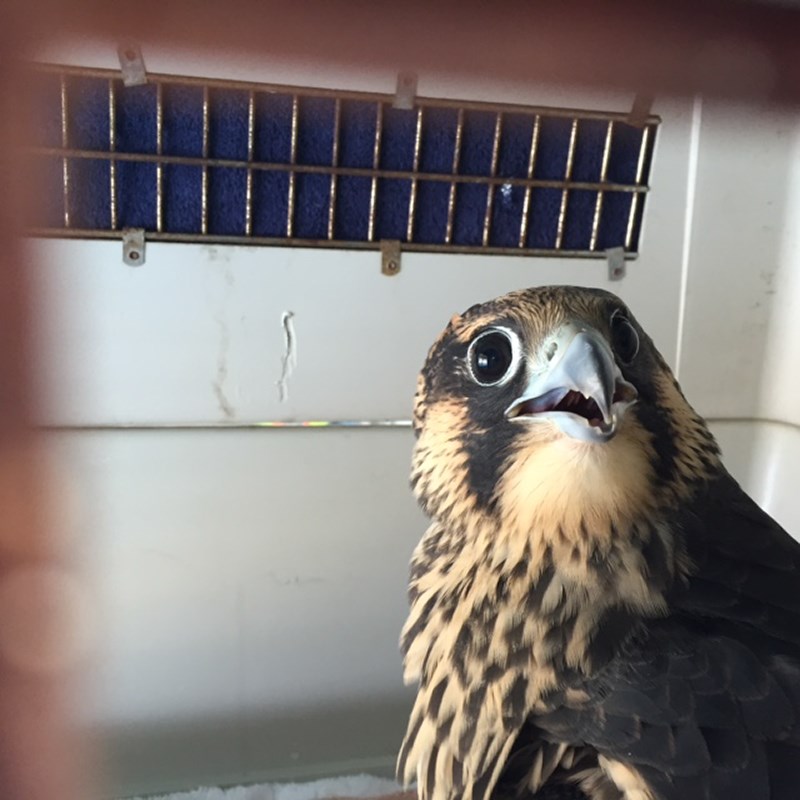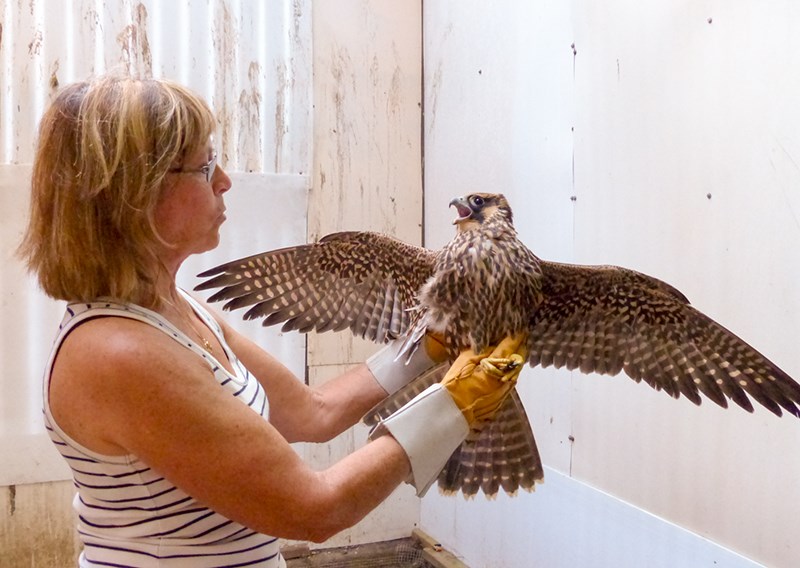George Mathewson
She hops from a perch and swoops past my head on a glide to the far end of the room, a fierce and angry essence.
We’re in a holding pen at the Bluewater Centre for Raptor Rehabilitation and founding director Lynn Eves moves in calmly with a net. It’s the start of an eventful day.
I have long been fascinated by peregrine falcons. They are beautiful birds, distant and self-possessed. But what really dazzles is the fact they are the fastest creatures on the planet.
Peregrines can cruise at speeds of 90 kilometres per hour, which is up there with highway vehicles. And when they hunt – a remarkable sight - they rise to a great height and dive like a rocket at speeds of up to 322 kilometres per hour.
For those of us of a certain age, that’s 200 mph.
A pair of peregrines has been nesting high in the girders of the Blue Water Bridge since 2005, with mixed reproductive success.
The mortality rate for young falcons is about 60% in their first year, which is where Eves comes in.
This year, three eggs hatched in the bridge nest. The lone male chick has disappeared. The mother and father are training one of the young females to hunt. The third chick fell into a holding pond at the Point Edward Water Treatment Plant, almost directly beneath the bridge.
Eves cleaned the feathers of the fouled, eight-week-old and fed her a diet of quail and pigeon pieces.
But the window of time during which adult peregrines train their young to hunt is a short one, Eves explains. To learn the life lessons needed to survive in the wild the baby must be returned quickly.
So last Tuesday she was banded, placed in a covered dog crate and driven to Point Edward. With the help of bridge staff and accompanied by a Michigan biologist, Eves rode a suspended trolley up under the bridge, aimed the cage toward the nest on the U.S. side and opened the door.
“To get through their first year of life is a real challenge,” Eves said after giving the peregrine a second chance, as she has countless other hawks, vultures, eagles and owls.
“It took her a little bit to come out but once she did she jumped on one of the beams, looked around a bit and off she went, flying really strong,” she said.
Ground observers reported the very next day the young falcon had rejoined her family and was eating food her parents provided.
The Bluewater Centre for Raptor Rehabilitation is located on Egremont Road near Wyoming and operates on donations of about $30,000 a year. To contact Lynn Eves, call 519-899-2443.

